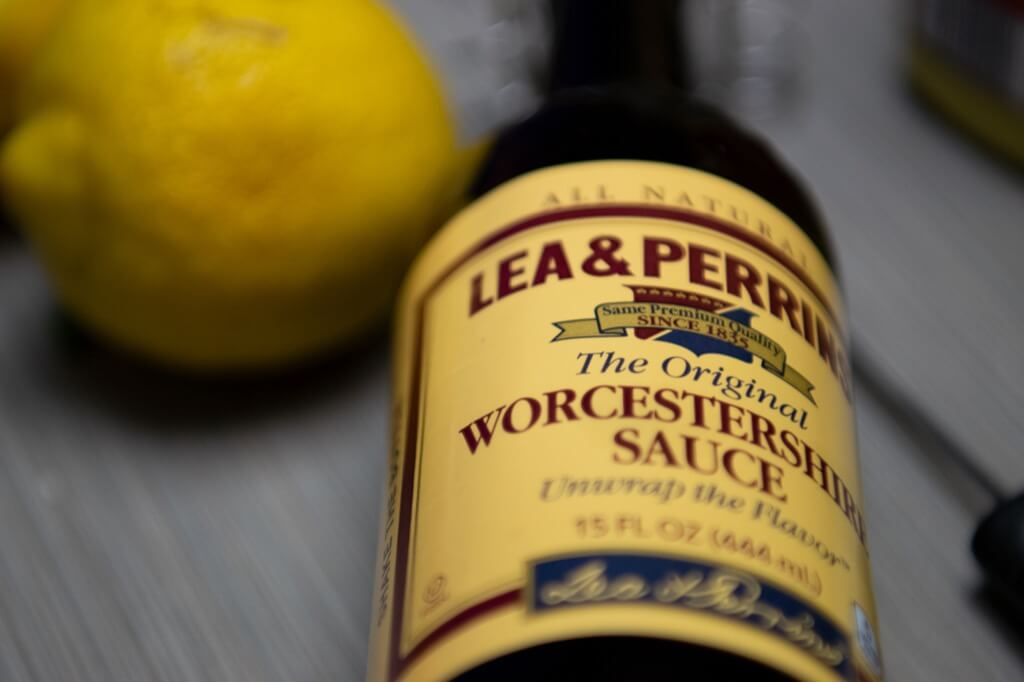A concoction of aged, fermented delights…
Worcestershire sauce, sometimes simply called “Worcester sauce”, has become a staple for many when seasoning their favorite meat and fish dishes. Its rich, tangy flavor even finds its way into cocktails like the beloved Bloody Mary. And yes, as strange as it may seem, the core ingredient is fermented fish.
Here’s a fun tidbit for the curious palate: when you’re sipping on a Bloody Mary, you’re indeed enjoying a touch of old British legacy in the form of this aged fish-based sauce. Originating from England, the primary element of Worcestershire sauce has a peculiar connection with fermented fish. Speaking from a Brit’s perspective, “fermented fish sauce” could just be one of the most intriguingly British phrases you’ll come across.
However, it’s not just about the anchovies, which, when fermented correctly, transform into a smooth purée over roughly 18 months. This fishy foundation is then enriched with a variety of natural flavorings – think garlic, onions, chili peppers, salt, and sugar, making it a delightful concoction.
The renowned sauce producers, Lea & Perrins, and later its acquirer, Heinz, have been rather secretive about the exact blend of their ingredients. Yes, the primary component is fermented fish, but the rumors suggest there could be additions like lemons, soy sauce, pickles, and even an intriguing “devil’s dung”, which presumably would add quite the kick.
The moniker “Worcestershire sauce” is steeped in geography rather than mystery. Rooted in an Indian recipe, the sauce was first crafted in the English city of Worcester, nestled in Worcestershire County, around the 1830s.
History narrates that the sauce was the brainchild of chemists John Wheeley Lea and William Perrins around 1837. Legend has it that the recipe was a gift from Lord Marcus Sandys, an English nobleman. However, a check in the annals of history will confirm that no Lord Sandys ever governed Bengal.
The duo, Lea & Perrins, also boasted about their sauce’s medicinal properties, citing its benefits for digestion. Today, we can only chuckle at such claims and appreciate the sauce for its unique taste. Their narrative tells of an initial failed batch, which they left to age in a cellar, only to discover later its delicious transformation. It’s one of those serendipitous tales in the world of culinary adventures.
Exhibiting true entrepreneurial spirit, Lea and Perrins ensured that their sauce sailed the seas in the late 1830s. Passengers and sailors aboard British ships fell in love with the sauce, carrying it with them to far-off lands. It was a strategic move that propelled Worcestershire sauce into global kitchens.
By 1866, their “fishy” dream had truly come to fruition, allowing them to focus entirely on quenching the global thirst (or should I say, hunger?) for their unique sauce. The scent of success might have had a fishy undertone, but a dream that remained, realized and cherished.
An Ancient Culinary Tradition
If you thought Worcestershire sauce was unique in its use of fermented fish, you’d be surprised to learn about Garum. An ancient Roman delight, Garum was made from fermented small fish intestines. As you delve into European culinary history, you’ll discover that as early as the 17th century, various fermented fish sauces, especially those based on anchovies, had already found their place in European kitchens.
Flavors Beyond Borders
While you savor your next dish with Worcestershire sauce, remember there are many global variations of this iconic sauce. For instance, when you’re indulging in a Japanese meal, you might come across Tonkatsu sauce. Typically served with breaded pork, Tonkatsu sauce represents just one of the myriad regional interpretations of this universally beloved sauce.
A Name Not Owned
You might believe that such a distinctive name as “Worcestershire sauce” would be trademarked, especially by pioneers like Lea & Perrins. However, a Supreme Court ruling from July 26, 1876, declared otherwise. This means that when you’re shopping for Worcestershire sauce, you’ll come across numerous brands sporting the same name. Lea & Perrins might hold onto their claim of being the original Worcestershire sauce, but it’s your adventurous palate that can explore the variety available on the market!
Worcestershire Sauce And The Pronunciation Conundrum
The pronunciation of “Worcestershire sauce” has been the source of much mirth and confusion among both native English speakers and those learning the language. How can such a compact word be so tricky to pronounce? To understand this, let’s take a linguistic journey into its phonetic landscape, historical origins, and the ongoing debate over its correct pronunciation.
Historical Origins and Linguistic Intricacies
The name “Worcestershire” comes from the county of Worcestershire in England, where the sauce was first concocted. The Old English roots of the word incorporate elements that are no longer common in modern English, which can make it challenging to pronounce.
Further complicating matters is the evolution of the English language itself. Many British place names have evolved over centuries, undergoing linguistic shortcuts that make them shorter and easier to say. This often results in pronunciations that don’t align neatly with the spelling, confusing those who attempt to pronounce them phonetically.
The Common Missteps
Many people, especially those outside the UK, attempt to pronounce every syllable in “Worcestershire.” However, in its traditional British pronunciation, several letters are silent, and syllables get slurred together. The common mistakes often involve:
- Overemphasizing the “-ces-” in the middle.
- Mispronouncing the “-shire” at the end, treating it like the word “shire” as in “The Shire” from The Lord of the Rings.
The Great Debate: How Do You Say It?
Ask different people, and you’re likely to get a variety of pronunciations. The most widely accepted British pronunciation sounds something like “WUSS-ter-sheer.” However, variations abound, especially in American English where you might hear “WORSE-ter-sheer” or even “WORSE-ter-shire.”
The debate continues because:
- Regional Accents: Depending on where you’re from in the UK, the US, or any other English-speaking region, accents can significantly alter the pronunciation.
- Pedantic vs. Practical: While some argue for the most historically and linguistically accurate version, others advocate for a more straightforward pronunciation that aligns more with how the word looks.
- Cultural Exchanges: As the sauce gained popularity globally, so did various pronunciations of its name. Each culture and language may have adapted the pronunciation to fit its phonetic norms.




